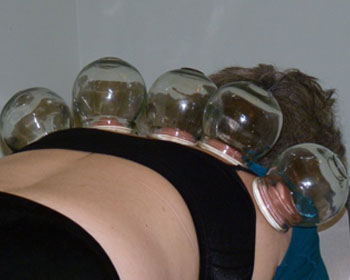
EverWell Acupuncture Center
Acupuncture is a form of therapy in which fine needles are inserted into specific points on the body called acupoints. The needles are sterile, stainless steel, and disposable. A person's health is influenced by the flow of Qi in the body, in combination with the universal forces of Yin and Yang become unbalanced, and illness may result. By inserting fine needles into the channels of energy, an acupuncturist can stimulate the body's own healing response and help restore its natural balance.
The principal aim of acupuncture in treating the whole person is to recover the equilibrium between the physical, emotional, and spiritual aspects of the individual, restoring homeostasis to mind-body spirit.
Where the acupuncture needle has been inserted, you may experience a vague numbness, heaviness, tingling, or dull ache. Sometimes people experience a sensation of energy spreading and moving around the needle. This is called the "Qi sensation". All these reactions are good and a sign that the treatment is working. After treatment, you may feel energized or may experience a deep sense of relaxation and well-being.
Do the needles hurt?
The sensation caused by an acupuncture needle varies. Some people feel a little pain as the needles are inserted, but some people feel no pain at all. The needles are tiny, just a little larger than a cat's whisker or a human hair.
How deep do they go?
The depth of the insertion varies. For example, your acupuncturist will use a needling technique that is different in fleshier areas, such as your buttocks. Typically, needles are inserted at depths ranging from 1/8" to 1 1/2".
How safe is acupuncture?
Acupuncture is extremely safe. It is an all-natural, drug-free therapy, yielding no side effects except feelings of relaxation and well-being. There is little danger of infection from acupuncture needles because they are sterile, used once, and then discarded.
Acupressure is also called ' Chinese Tui Na' massage which uses techniques including stroking, kneading, pulling pressing etc (there are more than twenty techniques altogether) to manipulate the tissues, muscles, and ligaments of the body. Pressing is one of the most common techniques, which is usually used on acupuncture points. That is why it is named 'acupressure'.
It does not only make you feel relaxed but also releases any physical and emotional tensions that may be blocking your energy channels, to help bring the body back into balance. Some deep tissue acupressure can help eliminate the lactic acid from the soft tissues as those manipulations can speed up and improve the blood circulation to move away the toxins and bring more fresh blood which is rich in oxygen and nutrients into the affected area. Acupressure along the spinal column can also ease the congested pressure round the root of spinal nerves to relieve the pain from the corresponding inner organs.
Cupping is a technique that is especially useful in treating problems of local Qi, or blood stagnation in the channels and is usually performed as an alternative to acupuncture.
The cups that are used are generally of rounded glass construction. The cups are warmed via a burning taper, held for a very short period of time inside the cup, and then quickly placed over the selected area.
Due to the candle flame, all of the oxygen in the cup has been removed and when placed open side down, a vacuum is created, which anchors the cup to the skin and pulls the skin upward on the inside of the glass.
The resulting pressure encourages the flow of Qi and blood in the area beneath the cup, and the local stagnation begins to clear.

One advantage of electroacupuncture is that a practitioner does not have to be as precise with the insertion of needles. This is because the current delivered through the needle stimulates a larger area than the needle itself. Another advantage is that electroacupuncture can be employed without using needles. A similar technique called transcutaneous electrical nerve stimulation, TENS, uses electrodes that are taped to the surface of the skin instead of being inserted. The advantage of this procedure is that it can be used by people who have a fear of needles or a condition that prohibits them from being needled.
Where are the reflexology points and areas?
In reflexology theory, points and areas on the feet, hands, and ears correspond to specific organs, bones, and body systems. Practitioners access these points on the feet and hands (bottom, sides, and top) and the ear (both inside as far as the finger can reach and outside) to affect organs and systems throughout the entire body.
- The left foot corresponds to the left side of the body and all organs, valves, etc. found there.
- The right foot corresponds to the right side of the body and all organs found there. For example, the liver is on the right side of the body, and therefore the corresponding reflex area is on the right foot.
